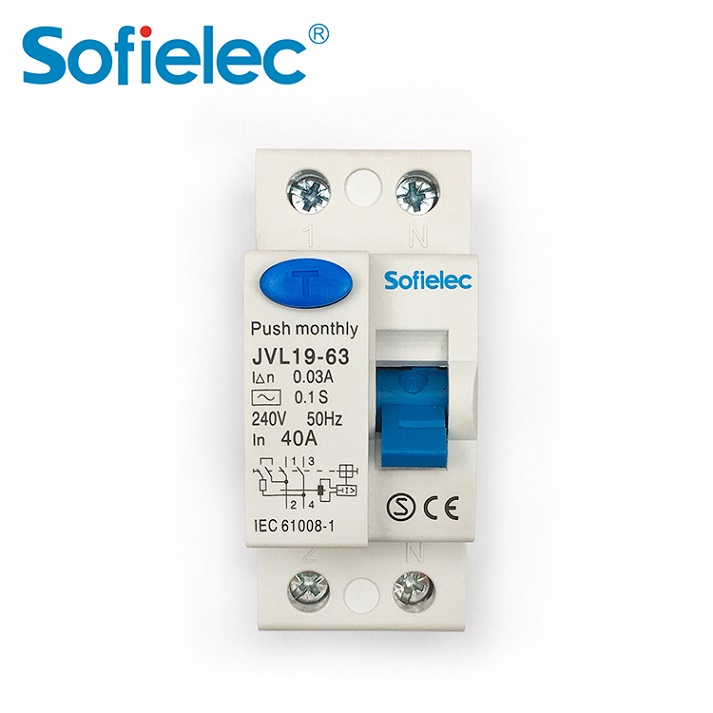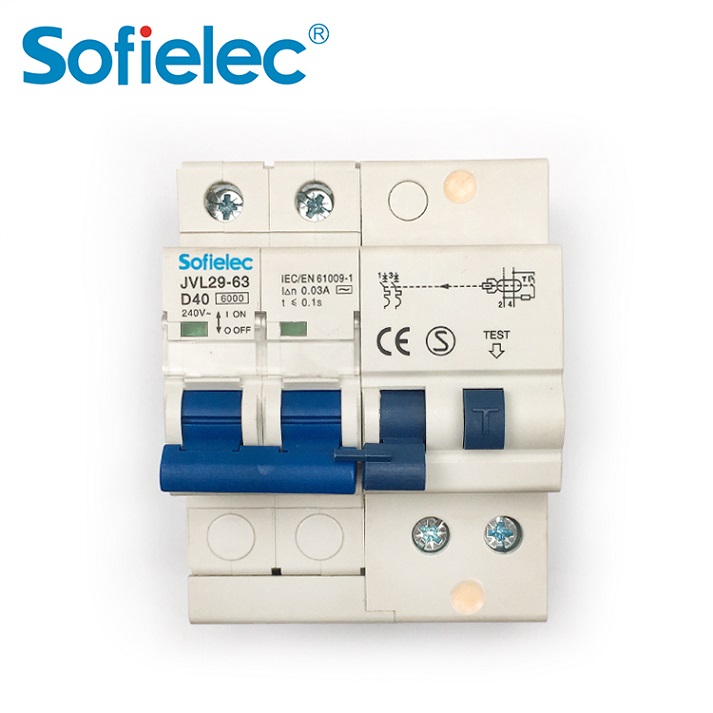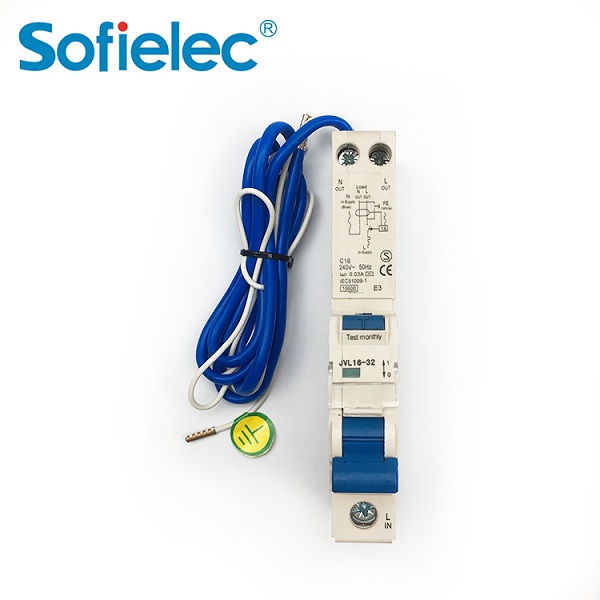JVL19-63 Residual Current Circuit Breaker RCCB is a Residual Current Circuit Breaker designed to protect against electrical shock and ground faults. It is available in two configurations: 1P+N and 3P+N.
The RCCB is available in both A and AC types, which refers to the sensitivity of the RCCB. An "A" type RCCB is sensitive to alternating current (AC) fault currents, while an "AC" type RCCB is sensitive to both AC and pulsating direct current (DC) fault currents.
This RCCB has a breaking capacity of 4.5kA, which means it can withstand short-circuit currents up to 4.5kA. It is suitable for use in applications where there is a risk of high short-circuit currents.
JVL19-63 Residual Current Circuit Breaker RCCB has a compact and ergonomic design. It is easy to install and operate, with clear markings on the device indicating its function and status. The RCCB has a high degree of resistance to external interference and voltage fluctuations, ensuring its reliable performance.
When the protected circuit is overloaded, the RCCB's handle will trip and remain in the center position, allowing for quick fault clearance. When manually operated, the handle cannot be held in this position.
This RCCB provides protection against ground faults and leakage currents, as well as isolation functions. It is equipped with finger-safe connection terminals for safety.
Overall, the JVL19-63 Residual Current Circuit Breaker RCCB is a reliable and cost-effective solution for protecting against electrical hazards in a variety of applications.
| Categories | Economic 4.5KA, 6kA Regular Series Circuit Breaker |
| Mode | electro-magnetic type,eletronic type |
| Residual curent charaeristics | A.AC |
| Pole No | 1P+N, 3P+N |
| Rated making and breaking capaciy | 630A |
| Rated current(A) | 16, 25, 40,63 |
| Rated voltage | AC 230/400V |
| Rated frequency | 50/60Hz |
| Terminal Connection Height | 19mm |
| Electro-mechanical endurance | 4000 cycles |
| Fastening torque | 2.0Nm |
Residual Current Circuit Breaker RCCB Technical Data

|
l Mode: electro-magnetic type, electronic type |
|
l Residual current characteristics: A, AC |
|
l Pole No.: 1P+N, 3P+N |
|
l Rated making and breaking capacity: 630A |
|
l Rated current(A): 16, 25, 40, 63 |
|
l Rated voltage: AC 230/400V |
|
l Rated frequency: 50/60Hz |
|
l Rated residual operating current I△n(A): 0.03, 0.1, 0.3, 0.5 |
|
l Rated residual non operating current I△no: 0.5I△n |
|
l Rated conditional short-circuit current Inc: 10kA |

|
l Rated conditional residual short-circuit Current I△c: 10kA |
|
l Tripping duration: instantaneous tripping≤0.1s |
|
l Residual tripping current range: 0.5I△n~I△n |
|
l Terminal Connection Height: 19mm |
|
l Electro-mechanical endurance: 4000 cycles |
|
l Connection capacity: Rigid conductor 25mm ² |
|
l Connection terminal:Screw terminal |
|
l Pillar terminal with clamp |
|
l Fastening torque: 2.0N.m |
|
l Installation:On symmetrical DIN rail 35.5mm Panel mounting |
|
l Protection class:IP20 |
Residual Current Circuit Breaker RCCB Construction and Feature

● Residual Current Circuit Breaker RCCB provides ground fault/leakage current protection and isolation.
● Residual Current Circuit Breaker RCCB has high short-circuit current withstand capability.
● Suitable for terminal and pin/fork busbar connections.
● RCCB is equipped with a contact position indication function to facilitate users to check its status.
● It is also equipped with finger-proof connection terminals for added safety.
● Residual Current Circuit Breaker RCCB uses flame-retardant plastic parts and can withstand abnormal heating and strong impact.
● When a ground fault/leakage current occurs and the rated sensitivity is exceeded, the RCCB will automatically open the circuit.
● RCCB works independently of power supply and line voltage, and is not affected by external interference and voltage fluctuations.
Residual Current Circuit Breaker RCCB Overall & Installation Dimensions

RCCB Connection Diagram

Residual Current Circuit Breaker RCCB JVL19-63 Video
Tags:Residual Current Circuit Breaker RCCB,4.5KA RCCB,3P+N RCCB
> What is mccb and mcb?
MCCB, for large - scale industrial and commercial use, handles high - current loads, detecting over - currents with thermal - magnetic or electronic trip units. MCB,...
> Is Circuit breaker AC or DC?
Circuit breakers can be designed for both AC (alternating current) and DC (direct current) applications. However, AC and DC circuit breakers have some differences in...
> How to use Circuit Breaker?
Select a suitable circuit breaker based on circuit requirements, install it in the electrical panel after power - off, let it monitor current during normal operation...
> Market Prospect Analysis of Circuit Breakers
The circuit breaker market has witnessed steady growth over the past few years, driven by the expansion of power infrastructure, industrial automation, and the burge...








